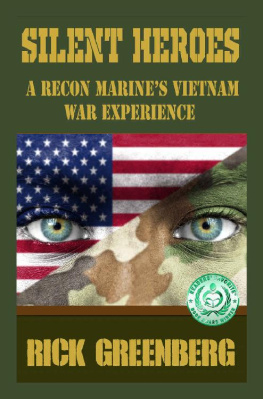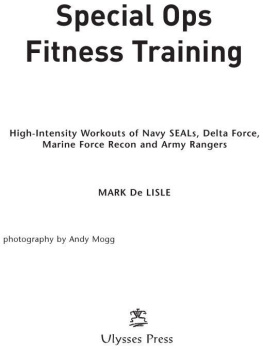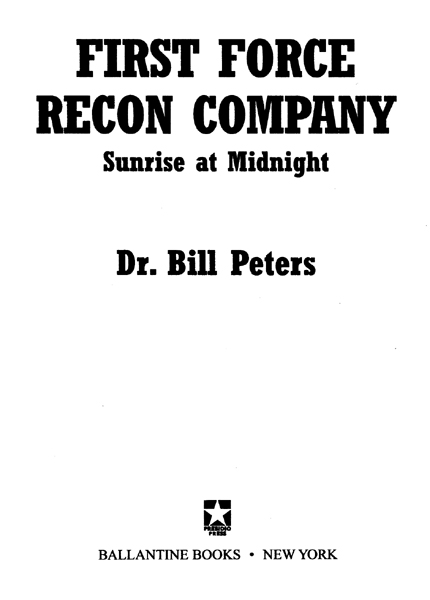With the ladder now in the crater, the team was executing the extract drill. Taylor got on the ladder first. Fastening himself with a safety rope and snap link, he was quickly followed by Rush and Reed and Ayers, who checked to ensure the ropes were secured to the ladder. Heavy fire was pouring into the crater from the uphill side, and we returned fire frantically.
Finally, the Cobras screamed in and pulled into a sixty-degree nose-down hover on two sides of the crater and began to saturate the heavy jungle on its edges with minigun fire. Given all the enemy activity, Miller and I understood that the extract was our first and last chance. The heavy thud of the Cobras 2.75-inch rockets was followed by the whine of shrapnel, which cut vicious swaths of foliage, then streaked ruthlessly through the air around the crater.
Despite the suppressive fire, the extract choppers and gunships were now taking steady hits from ground fire. Ayers snapped himself onto the ladder, then fired several bursts at the muzzle flashes around the crater. Miller looked at me and yelled above the din of battle, Lets get the hell outta here!
A Presidio Press Book
Published by The Random House Publishing Group
Copyright 1999 by Dr. Bill Peters
Foreword copyright 1999 by Lt. Gen. Ormond R. Simpson
All rights reserved.
Published in the United States by Presidio Press, an imprint of The Random House Publishing Group, a division of Random House, Inc., New York, and simultaneously in Canada by Random House of Canada Limited, Toronto.
Presidio Press and colophon are trademarks of Random House, Inc.
www.presidiopress.com
Library of Congress Catalog Card Number: 98-93276
eISBN: 978-0-307-78825-2
v3.1
Dedicated to
Sgt. Eugene Mother Ayers
MIA March 19, 1970
Greater love hath no man than this,
that a man lay down his life for his friends.
John 15:13
In memory of my father, William Joseph Peters, Sr.,
whose final words to me set the course for my life.
To the memory of C. Randy Champe,
whose uncommon valor in Vietnam,
and with the Los Angeles Police Department
on June 13, 1991,
was above and beyond the call of duty.
To the memory of 1st Lt. Leland Thane Wallace.
Contents
Acknowledgments
Before I render thanks to all the others who have helped me, I want to extend my deepest love and appreciation to my wife, Barbara, and to our sons, Tony and Paul, for their constant encouragement and inspiration during the many years that it took to develop this account of the brave men of 1st Force Recon Company.
To my mother, Lucille, and sister, Jan, whose unconditional love and prayers brought me home; to my in-laws, Joe and Mollie Gonzales, for believing in me and praying for this book; to Maj. Gen. Terrence and Catherine Murray for their love and support; to my partners: Harry and JoEllen Valentine, Bill and Peggy Hoover, Sue Champe, and Col. Joe Smith; to Ed Batal, the class of 1968s official point man; to Loretta and Martin Tencza, for their many prayers and support; to Owen Lock, for believing in this book.
Foreword
During my tenure as commanding general, 1st Marine Division in Vietnam, I was privileged to know many brave men. Quite naturally, most of these were to be seen in the units most frequently in direct contact with the enemyinfantry and recon. This is not to say that they were not present in other units, for I am certain they were. It was simply that they were not often put in position to demonstrate their personal courage.
However, I thought thenand think nowthat there seemed to be an unusual concentration of such men in 1st Force Recon. This relatively small, tightly knit, and highly motivated group seemed somehow to be a breed a bit apart. These people were in superb physical condition; their skills were honed to a fine edge. They were always readyeven eagerto undertake the most dangerous and difficult missions. I never saw higher morale anywhere in the area. The efforts of 1st Force Recon brought us information not available from any other source. This contributed directly to many successful operations and, I am convinced, saved lives of fellow Marines.
I recall one deep-penetration patrol with the code name Sunrise. After several days on site, the patrol had essentially accomplished its mission and was moving slowly toward the predetermined pickup point. In this process, it was detected and attacked by a much larger NVA force. Thus began some of the most tense hours in my memory. Sunrise was hit about 1730 hours. The word reached me about 1800 plus, while I was at dinner. I went immediately to the operations center in the huge bunker, which was the heart of the 1st Marine Division command post. My position was a high captains chair where I could scan the huge operations map and also hear all the radio transmissions. It was immediately clear that, at least for the time being, the only way we could help Sunrise was with air support. The patrol was on the far side of effective artillery fire. In the heavily wooded area, relief by a helicopter-transported ground element was out of the question before first light. I doubted that Sunrise could hold out that long. We turned to the 1st Wing, which responded in outstanding fashion. Helicopter gunships made radio contact with, and got a reasonable fix on, the teams position. By this time, the command posts of III MAF, 1st Wing, and 1st MarDiv were all alerted and monitoring all possible radio traffic. In our case, there was no panic, but in the op center the air was heavy with concern. The patrol leader reported that he had two KIA, five WIA, including himself as we learned later, and three able-bodied. He was moving by small increments in the direction of the pickup point, but it was apparent that he was not going to be able to reach it before he was overwhelmed.
The leader was seeking some spot where an emergency pickup might be possible. Gunships were relieved on station as ordnance and fuel ran low. A-4s dropped fragmentation bombs as we attempted to put a ring of fire around the beleaguered patrol. (My wordnot theirs.) Two CH-46 transport helicopters were on station and orbiting, hoping for the chance to make an emergency extraction.
A faithful sergeant stood by my chair all night, bringing me countless cups of coffee. As the hours wore on, it was clear that we had to at least attempt a pickup. Time was running out for Sunrise. The patrol leader picked a spot from which he thought he might be able to get his people aboard a hovering CH-46. The weather was marginal at best as the spot was on a steep mountainside where the chopper could not possibly land. Then, in an incredible feat of airmanship, the pilot of one CH-46 dropped his rear ramp and actually backed into the side of the mountain. The crewmen, watching from the rear of the aircraft, reported to the pilot that there was no clearance between the rear rotor blades and the trees. The pilot held the bird out of ground effect as Sunrise struggled aboard while four gunships flew a tight firing circle. The bodies of the KIA were brought aboard first, then the WIAs (except the team leader). Last to board was the team leader, backing up the ramp and firing all the while. Two members of the aircraft crew had crossed the ramp to help with the KIAs and WIAs. At last, all were aboard the aircraft. The pilot let the aircraft fall off into the valley as he closed the rear ramp. Then he pulled up and started home, closely escorted by the four gunships as the flight leader sent the welcome message: Sunrisehomeward bound! A shout of joy and relief swept the op center.







